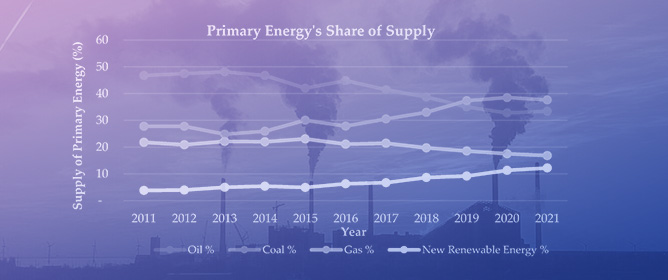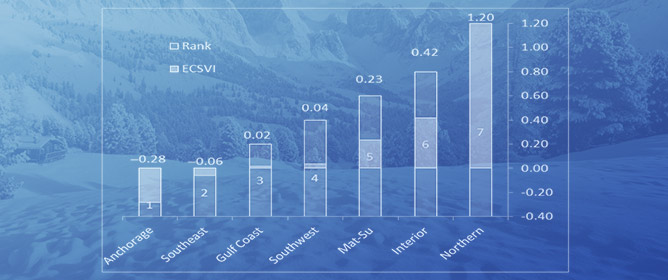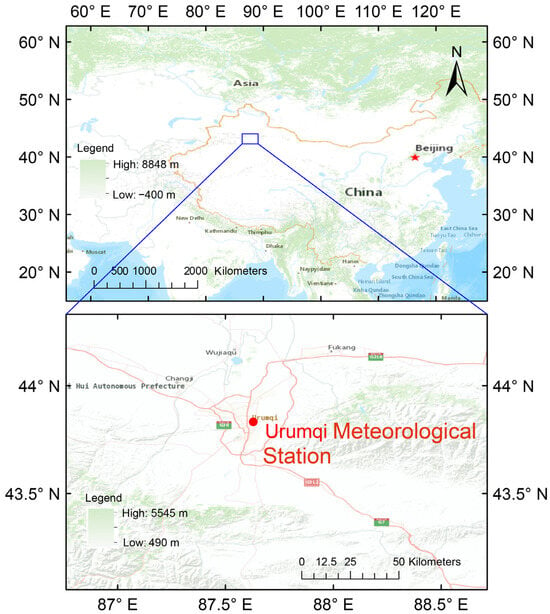Journal Description
Climate
Climate
is a scientific, peer-reviewed, open access journal of climate science published online monthly by MDPI. The American Society of Adaptation Professionals (ASAP) is affiliated with Climate and its members receive discounts on the article processing charges.
- Open Access— free for readers, with article processing charges (APC) paid by authors or their institutions.
- High Visibility: indexed within Scopus, ESCI (Web of Science), GeoRef, AGRIS, and other databases.
- Journal Rank: CiteScore - Q2 (Atmospheric Science)
- Rapid Publication: manuscripts are peer-reviewed and a first decision is provided to authors approximately 19.7 days after submission; acceptance to publication is undertaken in 3.4 days (median values for papers published in this journal in the second half of 2023).
- Recognition of Reviewers: reviewers who provide timely, thorough peer-review reports receive vouchers entitling them to a discount on the APC of their next publication in any MDPI journal, in appreciation of the work done.
Impact Factor:
3.7 (2022);
5-Year Impact Factor:
3.6 (2022)
Latest Articles
Characteristics of Foehn Wind in Urumqi, China, and Their Relationship with EI Niño and Extreme Heat Events in the Last 15 Years
Climate 2024, 12(4), 56; https://doi.org/10.3390/cli12040056 - 19 Apr 2024
Abstract
Dry and hot Foehn wind weather often occurs in Urumqi, China, due to its canyon terrain. This directly impacts the lives and health of local people. Using surface meteorological variables (including the hourly wind, temperature, humidity, and pressure) measured in situ at the
[...] Read more.
Dry and hot Foehn wind weather often occurs in Urumqi, China, due to its canyon terrain. This directly impacts the lives and health of local people. Using surface meteorological variables (including the hourly wind, temperature, humidity, and pressure) measured in situ at the Urumqi Meteorological Station and ERA5 reanalysis from the European Centre for Medium-Range Weather Forecasts in the past 15 years (2008–2022), the characteristics of Foehn wind and their relationship with EI Niño and extreme high-temperature events in Urumqi are analyzed. The results show that the annual distributions of Foehn wind present a fluctuating pattern, and the highest frequency occurred in 2015. Compared to the summer (July) and winter (February) seasons, Foehn wind occurs most frequently in spring (March, April, May) and autumn (September, October, and November). Daily variations in Foehn wind occur most frequently from 9:00 a.m. to 14:00 p.m. In particular, high levels are found at 10:00 a.m. and 11:00 a.m. in April and May. In 2011, 2012, and 2014, the average wind speed of FW exceeded 6 m/s, and the lowest average wind speed was 3.8 m/s in 2021. The temperature and relative humidity changes (ΔT and ΔRH) caused by Foehn wind are the most significant in winter and when Foehn wind begins to occur. The high-temperature hours related to Foehn wind weather in Urumqi represented 25% of the total in the past 15 years. During the EI Niño period, the amount of Foehn wind in Urumqi significantly increased; The correlation coefficient beteewn slide anomaly of Foehn days and the Oceanic Niño Index is as high as 0.71. Specifically, Foehn wind activity aggravates extreme high-temperature events. This study provides indications for Foehn wind weather forecasting in Urumqi.
Full article
(This article belongs to the Topic Advances in Multi-Scale Geographic Environmental Monitoring: Theory, Methodology and Applications)
►
Show Figures
Open AccessArticle
Visualising the Complexity of Drought: A Network Analysis Based on the Water Resilience Assessment Framework and the Actor-Relational Approach
by
Joachim Vercruysse, Greet Deruyter, Renaat De Sutter and Luuk Boelens
Climate 2024, 12(4), 55; https://doi.org/10.3390/cli12040055 - 18 Apr 2024
Abstract
This paper discusses the increasing severity of droughts due to climate change. It emphasises the complexity of defining drought and the diverse perspectives among stakeholders. Lots of stakeholders with unclear responsibilities are involved, which can lead to uncertainty and indecisiveness in addressing the
[...] Read more.
This paper discusses the increasing severity of droughts due to climate change. It emphasises the complexity of defining drought and the diverse perspectives among stakeholders. Lots of stakeholders with unclear responsibilities are involved, which can lead to uncertainty and indecisiveness in addressing the issue. To tackle this, the present paper proposes a methodology to dissect drought systems and reveal the intricate relationships between their components. This approach combines a comprehensive definition of drought with the “Water Resilience Assessment Framework” and an “Actor-Relational Approach”, visualised through network analysis. The methodology was applied to a case study situated in the Leie Basin of Flanders, Belgium. By employing this strategy, policymakers and mediators can gain a deeper understanding of drought, identify its root causes, and prioritise necessary changes for more effective drought and water management.
Full article
(This article belongs to the Special Issue Coping with Flooding and Drought)
►▼
Show Figures
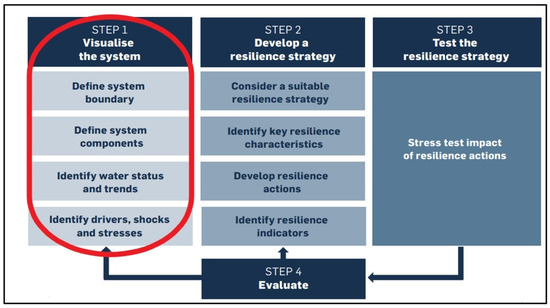
Figure 1
Open AccessArticle
Using Calibrated Rainfall Forecasts and Observed Rainfall to Produce Probabilistic Meteorological Drought Forecasts
by
Zhi-Weng Chua, Yuriy Kuleshov and Jessica Bhardwaj
Climate 2024, 12(4), 54; https://doi.org/10.3390/cli12040054 - 10 Apr 2024
Abstract
►▼
Show Figures
Most existing drought forecast systems rely only on observed or forecast rainfall, losing valuable context gained from considering both. The lack of a direct link between observed and forecast rainfall reduces the physical consistency of a system, motivating the development of a methodology
[...] Read more.
Most existing drought forecast systems rely only on observed or forecast rainfall, losing valuable context gained from considering both. The lack of a direct link between observed and forecast rainfall reduces the physical consistency of a system, motivating the development of a methodology that can directly link the two. The methodology developed in this study allows the comparison of the calibrated ensemble forecasts of rainfall totals from a dynamical climate model to observed rainfall deficiencies from a gridded rainfall analysis. The methodology is used to create a probabilistic product that forecasts the chance of entering meteorological drought, with lead times of one month (monthly forecast) and three months (seasonal forecast). Existing deficiency areas are included to facilitate analysis of how these areas are forecast to change. The performance of the developed methodology was verified using Percent Correct (PC), Brier Score (BS), and Relative Operating Characteristic (ROC) statistics. Analysis of the forecast plots was also completed visually. Forecast performance for areas with existing deficiencies as well as for non-deficiency areas was promising (PC rates of >79% and >97%, respectively). Although PC rates for observed deficiencies were low across most months, the mean forecast probability for these areas was 36%, indicating the system had value and outperformed climatology. A calibrated, coupled product like the one scoped in this study has not been explored and we note that it could be an invaluable tool for quantifying meteorological drought onset and persistence in Australia.
Full article
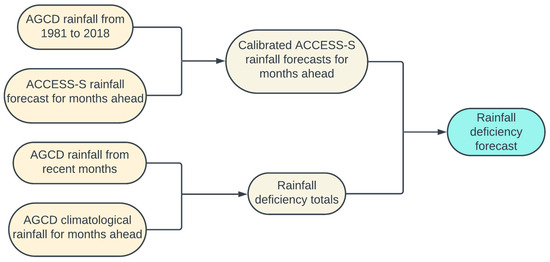
Figure 1
Open AccessReview
Key Innovations in Financing Nature-Based Solutions for Coastal Adaptation
by
Fausto Favero and Jochen Hinkel
Climate 2024, 12(4), 53; https://doi.org/10.3390/cli12040053 - 09 Apr 2024
Abstract
The implementation of nature-based solutions (NBSs) for coastal adaptation to climate change is limited by a well-documented lack of finance. Scholars agree that financial innovation represents a solution to this problem, particularly due to its potential for mobilising private investments. It remains unclear
[...] Read more.
The implementation of nature-based solutions (NBSs) for coastal adaptation to climate change is limited by a well-documented lack of finance. Scholars agree that financial innovation represents a solution to this problem, particularly due to its potential for mobilising private investments. It remains unclear however how exactly innovative solutions address the specific barriers found in NBS implementation and, given the distinctive local characteristics of NBSs, to what extent successful innovations can be replicated in other locations. This study addresses this issue by reviewing the literature and case studies of innovative financial solutions currently implemented in NBS projects, highlighting which financial barriers these arrangements address and which contextual conditions affect their applicability. We find that there is no “low-hanging fruit” in upscaling finance in NBSs through financial innovation. Innovative solutions are nevertheless expected to become more accessible with the increase in NBS project sizes, the increased availability of data on NBS performance, and the establishment of supportive policy frameworks. The flow of finance into NBS projects can be further enhanced through the external support of both public (de-risking and regulation) and private actors (financial expertise).
Full article
(This article belongs to the Special Issue Climate Change Adaptation Costs and Finance)
►▼
Show Figures
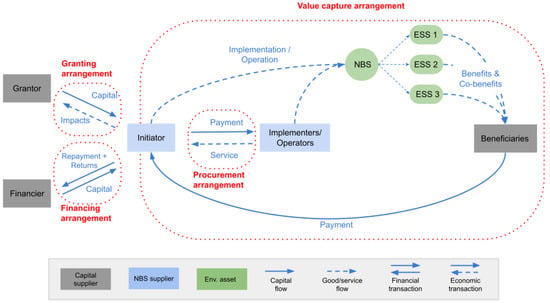
Figure 1
Open AccessArticle
Unlocking Weather Observations at Puerto Madryn-Patagonia, Argentina, 1902–1915
by
Susan Gabriela Lakkis, Pablo O. Canziani and Adrián E. Yuchechen
Climate 2024, 12(4), 52; https://doi.org/10.3390/cli12040052 - 09 Apr 2024
Cited by 1
Abstract
The recovery of early records of maximum, minimum, and mean temperatures; pressure; and relative humidity measurements in Puerto Madryn for the period 1902–1915 is presented. A careful evaluation of the quality of the data was performed using internal coherence, tolerance, and temporal consistency
[...] Read more.
The recovery of early records of maximum, minimum, and mean temperatures; pressure; and relative humidity measurements in Puerto Madryn for the period 1902–1915 is presented. A careful evaluation of the quality of the data was performed using internal coherence, tolerance, and temporal consistency tests. The monthly mean series of all the variables, constructed from daily raw data, were subject to several homogeneity tests, and only discontinuities in pressure and relative humidity were found. The homogenized monthly mean series were compared with the Twentieth Century Reanalysis series in annual and seasonal time steps. In addition, the trends of each variable were assessed using the Mann–Kendall procedure, and correlations between relative humidity and the other variables were examined. The results show a remarkably good agreement between the temperature measurements and reanalysis values with a Spearman correlation coefficient of 0.94. The raw data for minimum and maximum temperatures represent a very good upper and lower bound for the mean temperature values of both observational and reanalysis data. Agreement was found to be lower for relative humidity and pressure with the correlation coefficients being close to 0.6 in both cases. No trends were found for the variables. The correlation analysis of the humidity measurements with the other variables shows an inverse dependence of the temperatures and no relatedness with the pressure values.
Full article
(This article belongs to the Special Issue The Importance of Long Climate Records)
►▼
Show Figures
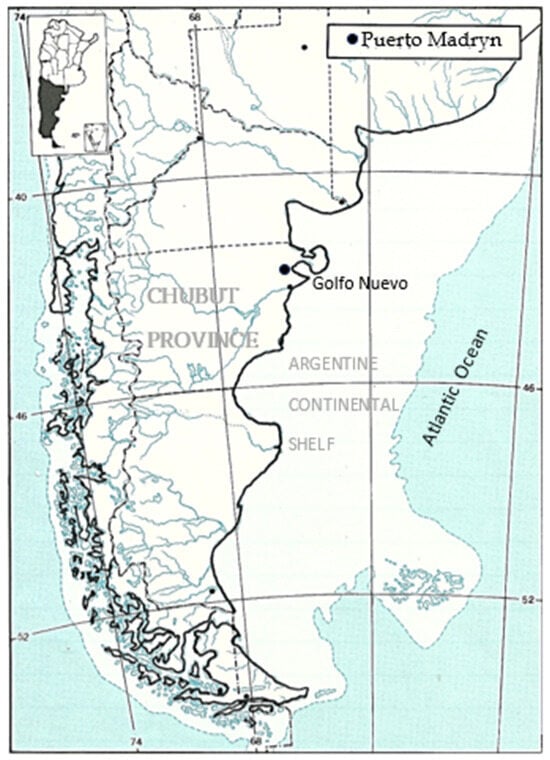
Figure 1
Open AccessArticle
Unlocking Weather Observations at the End of the World: Late-XIX and Early-XX Century Monthly Mean Temperature Climatology for Southern Patagonia
by
Pablo O. Canziani, S. Gabriela Lakkis, Adrián E. Yuchechen and Oscar Bonfilli
Climate 2024, 12(4), 51; https://doi.org/10.3390/cli12040051 - 09 Apr 2024
Abstract
A climate analysis of the monthly mean temperatures of Southern Patagonia during the late-XIXth and early-XXth centuries was carried out as part of the international data rescue Atmospheric Circulation Reconstructions over the Earth (ACRE) program partnership in Argentina, together with other data sources
[...] Read more.
A climate analysis of the monthly mean temperatures of Southern Patagonia during the late-XIXth and early-XXth centuries was carried out as part of the international data rescue Atmospheric Circulation Reconstructions over the Earth (ACRE) program partnership in Argentina, together with other data sources with regional and global records. The data from these diverse sources were combined to carry out a study in the coastal region of Patagonia, including Tierra del Fuego, between 42° S and 55° S for 11 locations. Furthermore, HadSST monthly/seasonal fields during the period 1880–1920 were also used. Both mean monthly and seasonal temperature values and timeseries variability were considered. Their analysis shows consistent behavior within the study region and compared to Southern Hemisphere mean results, which are characterized by a warm late-XIX century and a cooler early-XX century. This is also in agreement with SST variability along the coasts of Patagonia and hemispheric records. A comparison with present-day observations, where available, also yields consistent behavior. Low-frequency variability, i.e., in periods longer than 3 years, during the study period is consistent with present variability. Trend estimates at Trelew and Rio Gallegos for the period 1901–2020 yield significant trends, consistent with hemispheric warming at their latitudes.
Full article
(This article belongs to the Special Issue The Importance of Long Climate Records)
►▼
Show Figures
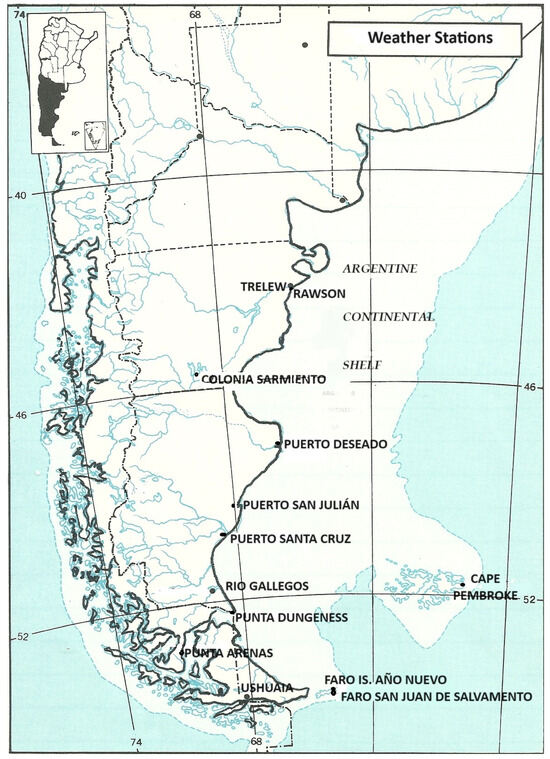
Figure 1
Open AccessArticle
Meta-Analysis and Ranking of the Most Effective Methane Reduction Strategies for Australia’s Beef and Dairy Sector
by
Merideth Kelliher, Diana Bogueva and Dora Marinova
Climate 2024, 12(4), 50; https://doi.org/10.3390/cli12040050 - 08 Apr 2024
Abstract
Although Australia remains committed to the Paris Agreement and to reducing its greenhouse gas emissions, it was late in joining the 2021 Global Methane Pledge. Finding suitable methane (CH4) mitigation solutions for Australia’s livestock industry should be part of this journey.
[...] Read more.
Although Australia remains committed to the Paris Agreement and to reducing its greenhouse gas emissions, it was late in joining the 2021 Global Methane Pledge. Finding suitable methane (CH4) mitigation solutions for Australia’s livestock industry should be part of this journey. Based on a 2020–2023 systematic literature review and multicriteria decision approach, this study analyses the available strategies for the Australian beef and dairy sector under three scenarios: baseline, where all assessment criteria are equally weighted; climate emergency, with a significant emphasis on CH4 reduction for cattle in pasture and feedlot systems; and conservative, where priority is given to reducing costs. In total, 46 strategies from 27 academic publications were identified and classified as ‘Avoid’, ‘Shift’, or ‘Improve’ with respect to their impact on current CH4 emissions. The findings indicate that ‘Avoid’ strategies of conversion of agricultural land to wetlands, salt marshes, and tidal forest are most efficient in the climate emergency scenario, while the ‘Improve’ strategy of including CH4 production in the cattle breeding goals is the best for the conservative and baseline scenarios. A policy mix that encourages a wide range of strategies is required to ensure CH4 emission reductions and make Australia’s livestock industry more sustainable.
Full article
(This article belongs to the Special Issue Recent Climate Change Impacts in Australia)
►▼
Show Figures
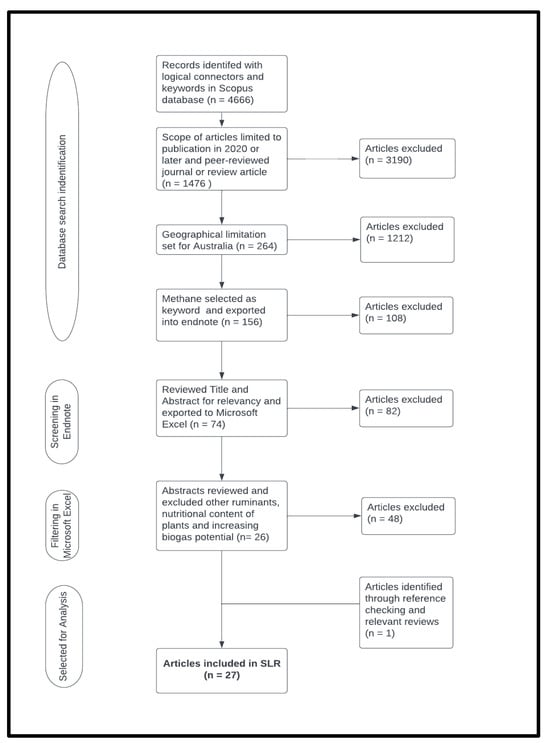
Figure 1
Open AccessFeature PaperArticle
Machine Learning Identification of Attributes and Predictors for a Flash Drought in Eastern Australia
by
Milton Speer, Joshua Hartigan and Lance M. Leslie
Climate 2024, 12(4), 49; https://doi.org/10.3390/cli12040049 - 08 Apr 2024
Abstract
Flash droughts (FDs) are natural disasters that strike suddenly and intensify quickly. They occur almost anywhere, anytime of the year, and can have severe socio-economic, health and environmental impacts. This study focuses on a recent FD that began in the cool season of
[...] Read more.
Flash droughts (FDs) are natural disasters that strike suddenly and intensify quickly. They occur almost anywhere, anytime of the year, and can have severe socio-economic, health and environmental impacts. This study focuses on a recent FD that began in the cool season of the Upper Hunter region of Eastern Australia, an important energy and agricultural local and global exporter that is both flood- and drought-prone. Here, the authors investigate the FD that started abruptly in May 2023 and extended to October 2023. The FD followed floods in November 2021 and much above-average May–October 2022 rainfall. Eight machine learning (ML) regression techniques were applied to the 60 May–October periods from 1963–2022, using a rolling windows attribution search from 45 possible climate drivers, both individually and in combination. The six most prominent climate drivers, and likely predictors, provide an understanding of the major contributors to the FD. Next, the 1963–2022 data were divided into two shorter timespans, 1963–1992 and 1993–2022, generally accepted as representing the early and accelerated global warming periods, respectively. The key attributes were markedly different for the two timespans. These differences are readily explained by the impacts of global warming on hemispheric and synoptic-scale atmospheric circulations.
Full article
(This article belongs to the Special Issue Addressing Climate Change with Artificial Intelligence Methods)
►▼
Show Figures
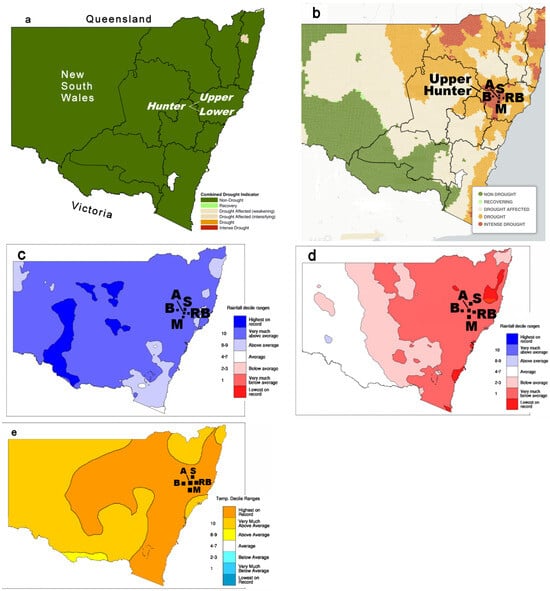
Figure 1
Open AccessArticle
Spatiotemporal Assessment of Surface Solar Dimming in India: Impacts of Multi-Level Clouds and Atmospheric Aerosols
by
Ashwin Vijay Jadhav, P. R. C. Rahul, Vinay Kumar, Umesh Chandra Dumka and Rohini L. Bhawar
Climate 2024, 12(4), 48; https://doi.org/10.3390/cli12040048 - 30 Mar 2024
Abstract
►▼
Show Figures
Surface solar radiation (SSR) is a fundamental energy source for an equitable and sustainable future. Meteorology-induced variability increases uncertainty in SSR, thereby limiting its reliability due to its intermittent nature. This variability depends on several meteorological factors, including clouds, atmospheric gases, and aerosol
[...] Read more.
Surface solar radiation (SSR) is a fundamental energy source for an equitable and sustainable future. Meteorology-induced variability increases uncertainty in SSR, thereby limiting its reliability due to its intermittent nature. This variability depends on several meteorological factors, including clouds, atmospheric gases, and aerosol concentrations. This research investigates the detailed impact of different levels of clouds and aerosols on SSR across India. Utilizing satellite data with reanalysis retrievals, the research covers a span of three decades (30 years), from 1993 to 2022. Aerosols contributed to an average attenuation of ~13.33% on SSR, while high, mid, and low cloud conditions showed much stronger impacts, with an attenuation of ~30.80%, ~40.10%, and ~44.30%, respectively. This study reveals an alarming pattern of increasing cloud impact (Cimpact) on SSR in the recent decade, with a significant increasing rate of ~0.22% year−1 for high cloud (HCimpact) and ~0.13% year−1 for mid cloud (MCimpact) impact, while low cloud impact (LCimpact) showed minimal change. The trend of aerosol impact (Aimpact) also showed an average increase of ~0.14% year−1 across all regions. The findings underscore the imperative of considering climatic variables while studying the growing solar dimming. Our findings also will assist policymakers and planners in better evaluating the solar energy resources across India.
Full article
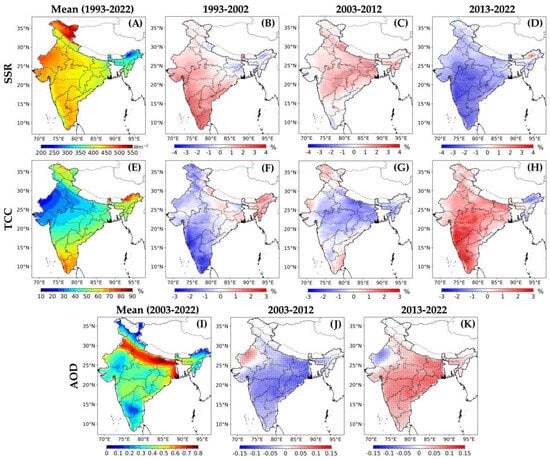
Figure 1
Open AccessArticle
Adaptation Attitudes Are Guided by “Lived Experience” Rather than Electoral Interests: Evidence from a Survey Experiment in Bangladesh
by
Todd A. Eisenstadt, Sk Tawfique M. Haque, Michael A. Toman and Matthew Wright
Climate 2024, 12(4), 47; https://doi.org/10.3390/cli12040047 - 26 Mar 2024
Abstract
After decades of presuming that climate adaptation is a private good benefitting only those receiving resources to reduce individual climate risks, respondents in a survey experiment among the climate-vulnerable in Bangladesh chose less-particularistic adaptation projects than “electoral connection” disaster relief theories predict and
[...] Read more.
After decades of presuming that climate adaptation is a private good benefitting only those receiving resources to reduce individual climate risks, respondents in a survey experiment among the climate-vulnerable in Bangladesh chose less-particularistic adaptation projects than “electoral connection” disaster relief theories predict and more “short-sighted” projects than international diplomats anticipate. This article reports on the experiment, which asked a representative national sample of Bangladeshis whether they favor spending funds on short-term particularistic solutions (disaster relief stockpiles), medium-term inclusionary and non-excludable solutions (ocean embankments), or long-term, public goods solutions (the development of flood-resistant rice seeds). More respondents chose “middle ground” embankment spending, and a statistically significant change in respondent propensities was tied to their lived experience with climate vulnerability rather than electoral incentives. The logic of their choices contradicts existing explanations, implying that a reconsideration of vulnerable community preferences, and how to address them, may be needed.
Full article
(This article belongs to the Section Policy, Governance, and Social Equity)
►▼
Show Figures
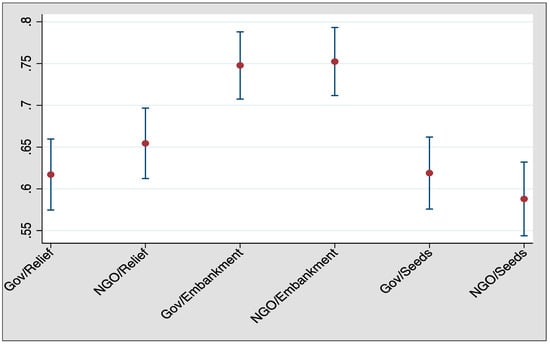
Figure 1
Open AccessPerspective
A Move towards Developing Usable Climate Change Adaptation and Mitigation Services for the Agricultural Sector
by
Mokhele E. Moeletsi and Mitsuru Tsubo
Climate 2024, 12(3), 46; https://doi.org/10.3390/cli12030046 - 20 Mar 2024
Abstract
Dryland farming is at the center of increasing pressure to produce more food for the growing population in an environment that is highly variable and with high expectations for the standard of their production systems. While there is mounting pressure for increased productivity,
[...] Read more.
Dryland farming is at the center of increasing pressure to produce more food for the growing population in an environment that is highly variable and with high expectations for the standard of their production systems. While there is mounting pressure for increased productivity, the responsibility to protect the environment and diminish the agricultural sector’s carbon footprint is receiving growing emphasis. Achieving these two goals calls for a consolidated effort to ensure that the scientific community and service providers partner with farmers to create a sustainable food production system that does not harm the environment. In this paper, we studied the nature of the services present in the market and identified ways that could be used to improve the climate services available to the agricultural sector. Important factors that could increase the usability of climate services include coproduction, context-specific information, innovation, demand-driven services, timeliness of services, highly applicable information, provision of services in the correct format, services that increase user experience, specificity of services to a locale, and services that are easily accessible.
Full article
(This article belongs to the Section Climate Adaptation and Mitigation)
►▼
Show Figures
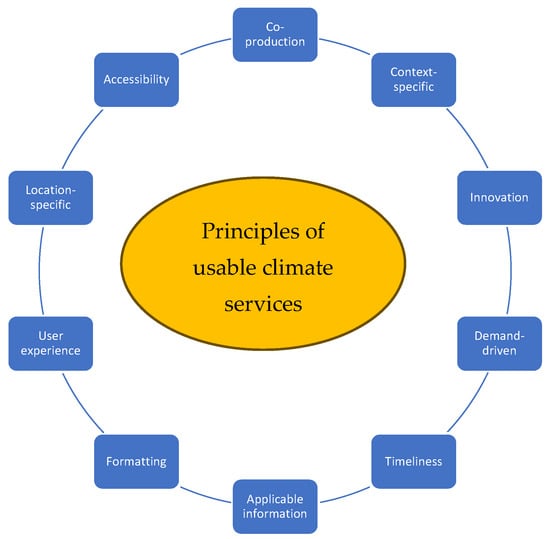
Figure 1
Open AccessArticle
Temporal and Spatial Analyses of Forest Burnt Area in the Middle Volga Region Based on Satellite Imagery and Climatic Factors
by
Eldar Kurbanov, Oleg Vorobev, Sergei Lezhnin, Denis Dergunov, Jinliang Wang, Jinming Sha, Aleksandr Gubaev, Ludmila Tarasova and Yibo Wang
Climate 2024, 12(3), 45; https://doi.org/10.3390/cli12030045 - 17 Mar 2024
Abstract
Wildfires are important natural drivers of forest stands dynamics, strongly affecting their natural regeneration and providing important ecosystem services. This paper presents a comprehensive analysis of spatiotemporal burnt area (BA) patterns in the Middle Volga region of the Russian Federation from 2000 to
[...] Read more.
Wildfires are important natural drivers of forest stands dynamics, strongly affecting their natural regeneration and providing important ecosystem services. This paper presents a comprehensive analysis of spatiotemporal burnt area (BA) patterns in the Middle Volga region of the Russian Federation from 2000 to 2022, using remote sensing time series data and considering the influence of climatic factors on forest fires. To assess the temporal trends, the Mann–Kendall nonparametric statistical test and Theil–Sen’s slope estimator were applied using the LandTrendr algorithm on the Google Earth Platform (GEE). The accuracy assessment revealed a high overall accuracy (>84%) and F-score value (>82%) for forest burnt area detection, evaluated against 581 reference test sites. The results indicate that fire occurrences in the region were predominantly irregular, with the highest frequency recorded as 7.3 over the 22-year period. The total forest BA was estimated to be around 280 thousand hectares, accounting for 1.7% of the land surface area or 4.0% of the total forested area in the Middle Volga region. Coniferous forest stands were found to be the most fire-prone ecosystems, contributing to 59.0% of the total BA, while deciduous stands accounted for 25.1%. Insignificant fire occurrences were observed in young forests and shrub lands. On a seasonal scale, temperature was found to have a greater impact on BA compared with precipitation and wind speed.
Full article
(This article belongs to the Special Issue Forest Ecosystems under Climate Change)
►▼
Show Figures
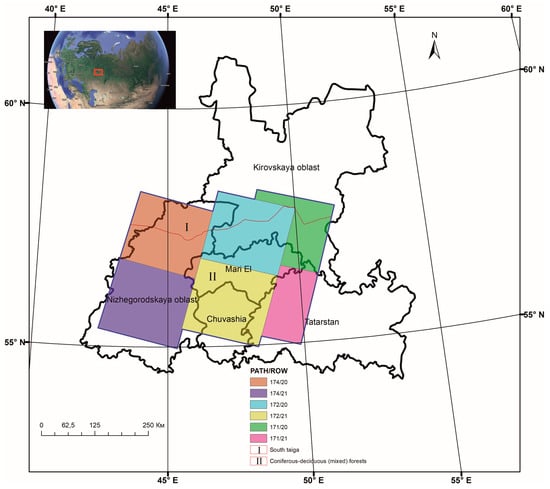
Figure 1
Open AccessArticle
Safe Sowing Windows for Smallholder Farmers in West Africa in the Context of Climate Variability
by
Sehouevi Mawuton David Agoungbome, Marie-Claire ten Veldhuis and Nick van de Giesen
Climate 2024, 12(3), 44; https://doi.org/10.3390/cli12030044 - 17 Mar 2024
Abstract
Climate variability poses great challenges to food security in West Africa, a region heavily dependent on rainfall for farming. Identifying sowing strategies that minimize yield losses for farmers in the region is crucial to securing their livelihood. In this paper, we investigate three
[...] Read more.
Climate variability poses great challenges to food security in West Africa, a region heavily dependent on rainfall for farming. Identifying sowing strategies that minimize yield losses for farmers in the region is crucial to securing their livelihood. In this paper, we investigate three sowing strategies to assess their ability to identify safe sowing windows for smallholder farmers in the Sudanian region of West Africa (WA) in the context of a changing climate. The GIS version of the FAO crop model, AquaCrop-GIS, is used to simulate the yield response of maize (Zea mays L.) to varying sowing dates throughout the rainy season across WA. Based on an average of 38 years of data per grid cell, we identify safe sowing windows across the Sudanian region that secure at least 90% of maximal yield. We find that current sowing strategies, based on minimum thresholds for rainfall accumulated over a period that are widely applied in the region, carry a higher risk of yield failure, especially at the beginning of the rainy season. This analysis shows that delaying sowing for a month to mid-June in the central region (east of Lon 8.5°W), and to early August in the semi-arid areas is a safer strategy that ensures optimal yields. A comparison between the periods 1982–1991 and 1992–2019 shows a negative shift for LO10 mm and LO20 mm, suggesting a wetter regime compared to the dry periods of the 1970s and 1980s. On the contrary, we observe a positive shift in the safe window strategy, highlighting the need for precautions due to erratic rainfall at the beginning of the season. The precipitation-based strategies hold a high risk, while the safe sowing window strategy, easily accessible to smallholder farmers, is more fitting, given the current climate.
Full article
(This article belongs to the Special Issue Changing Rainfall Patterns and Food Insecurity: Vulnerable Regions and Adaptation Strategies)
►▼
Show Figures
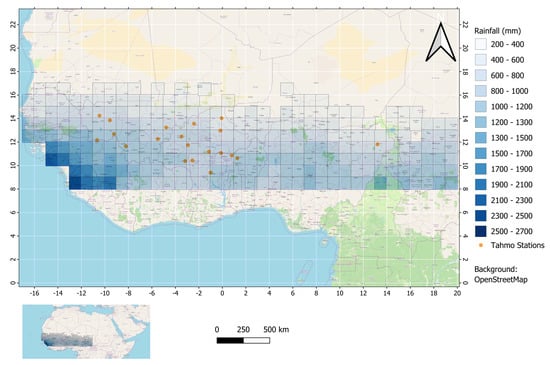
Figure 1
Open AccessArticle
Space–Time Characterization of Extreme Precipitation Indices for the Semiarid Region of Brazil
by
Ana Letícia Melo dos Santos, Weber Andrade Gonçalves, Lara de Melo Barbosa Andrade, Daniele Tôrres Rodrigues, Flávia Ferreira Batista, Gizelly Cardoso Lima and Cláudio Moisés Santos e Silva
Climate 2024, 12(3), 43; https://doi.org/10.3390/cli12030043 - 13 Mar 2024
Abstract
►▼
Show Figures
Various indices of climate variability and extremes are extensively employed to characterize potential effects of climate change. Particularly, the semiarid region of Brazil is influenced by adverse effects of these changes, especially in terms of precipitation. In this context, the main objective of
[...] Read more.
Various indices of climate variability and extremes are extensively employed to characterize potential effects of climate change. Particularly, the semiarid region of Brazil is influenced by adverse effects of these changes, especially in terms of precipitation. In this context, the main objective of the present study was to characterize the regional trends of extreme precipitation indices in the semiarid region of Brazil (SAB), using daily precipitation data from the IMERG V06 product, spanning the period from 1 January 2001 to 31 December 2020. Twelve extreme precipitation indices were considered, which were estimated annually, and their spatial and temporal trends were subsequently analyzed using the nonparametric Mann–Kendall test and Sen’s slope. The analysis revealed that the peripheral areas of the SAB, especially in the northwest and extreme south regions, exhibited higher intensity and frequency of extreme precipitation events compared to the central portion of the area. However, a negative trend in event intensity was noted in the north, while positive trends were identified in the south. The frequency of extreme events showed a predominance of negative trends across most of the region, with an increase in consecutive dry days particularly throughout the western SAB. The average total precipitation index was above 1000 mm in the north of the SAB, whereas in the central region, the precipitation averages were predominantly below 600 mm, with rainfall intensity values ranging between 6 and 10 mm/day. Over the span of 20 years, the region underwent an average of 40 consecutive dry days in certain localities. A negative trend was observed in most of the indices, indicating a reduction in precipitation intensity in future decades, with variations in some indices. The dry years observed towards the end of the analyzed period likely contributed to the observed negative trends in the majority of extreme precipitation indices. Such trends directly impact the intensity and frequency of extreme weather events in the SAB. The study is important for highlighting and considering the impacts of changes in precipitation extremes in the semiarid region of Brazil. Based on the obtained results, we advocate the implementation of public policies to address future challenges, such as incorporating adaptations in water resource management, sustainable agricultural practices, and planning for urban and rural areas.
Full article
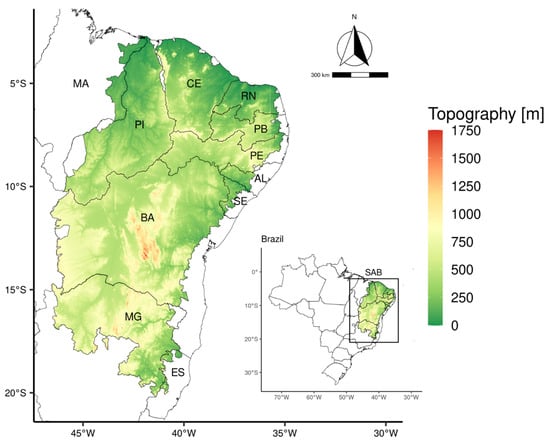
Figure 1
Open AccessReview
Impacts of Climate Change Scenarios on the Corn and Soybean Double-Cropping System in Brazil
by
Tiago Bigolin and Edson Talamini
Climate 2024, 12(3), 42; https://doi.org/10.3390/cli12030042 - 12 Mar 2024
Abstract
►▼
Show Figures
Brazil is one of the main producing and exporting countries of corn and soybean and a continental country with climatic diversity that allows the cultivation of these crops in various agricultural systems. Double cropping is a widely adopted system throughout the national territory,
[...] Read more.
Brazil is one of the main producing and exporting countries of corn and soybean and a continental country with climatic diversity that allows the cultivation of these crops in various agricultural systems. Double cropping is a widely adopted system throughout the national territory, where it is possible to cultivate soybeans at the beginning of the growing season, followed by corn in succession, in the same growing season. The present study aims to systematize the scientific knowledge about the impacts of future climate change scenarios on yield and on the double-cropping system of soybean + corn in Brazil. Systematic review procedures were adopted. The soybean yield is projected to increase in all regions of Brazil under all climate scenarios. Corn yields under future climate scenarios are projected to decline, with the subtropical climate region being less affected than the northern regions. The double-cropping systems of soybean + corn tend to present increasing climate risks in tropical climate regions. Climate change scenarios point to a delay in the start of the rainy season that will delay the sowing of soybeans, consequently delaying the sowing of corn in succession, resulting in fewer rainy days to complete its cycle.
Full article
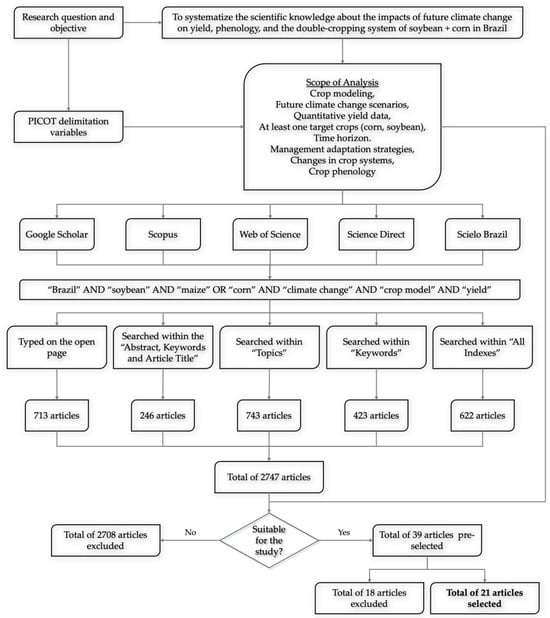
Figure 1
Open AccessArticle
What Cities Want to Measure: Bottom-Up Selection of Indicators for Systemic Change toward Climate Neutrality Aligned with Sustainable Development Goals (SDGs) in 40 European Cities
by
Rohit Mondal, Sabrina Bresciani and Francesca Rizzo
Climate 2024, 12(3), 41; https://doi.org/10.3390/cli12030041 - 08 Mar 2024
Abstract
Cities are taking action to respond to climate change by designing and implementing sustainable solutions which provide benefits and challenges to citizens. Measuring the progress and effects of such actions at the urban level, beyond mere greenhouse gas (GHG) emissions quantification, is still
[...] Read more.
Cities are taking action to respond to climate change by designing and implementing sustainable solutions which provide benefits and challenges to citizens. Measuring the progress and effects of such actions at the urban level, beyond mere greenhouse gas (GHG) emissions quantification, is still an emerging research area. Based on data from the 40 European cities belonging to 20 pilot city programmes within the EU-funded NetZeroCities (NZC) project, cities’ selections and preferences for indicators for assessing their climate actions are analysed in relation to the Sustainable Development Goals (SDGs). This study provides bottom-up evidence of cities’ selection of non-GHG indicators through different levers of change, including participatory governance and social innovation, for assessing progress and the co-benefits of actions toward climate neutrality taken at the urban level. The resulting list of indicators, classified according to the SDGs, provides evidence of cities’ priorities and can be utilised by cities’ climate transition teams and also by researchers, as it highlights gaps and opportunities compared to extant literature.
Full article
(This article belongs to the Special Issue Climate Change - Achieving the UN Sustainable Development Goals in Urban Contexts)
►▼
Show Figures
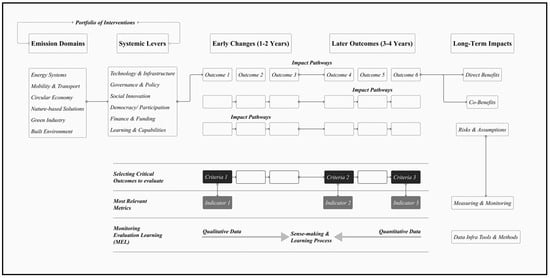
Figure 1
Open AccessArticle
Multifaceted Linkages among Eco-Climatic Factors, Plankton Abundance, and Gonadal Maturation of Hilsa Shad, Tenualosa ilisha, Populations in Bangladesh
by
Mobin Hossain Shohan, Mohammad Abu Baker Siddique, Balaram Mahalder, Mohammad Mahfujul Haque, Chayon Goswami, Md. Borhan Uddin Ahmed, Mohammad Ashraful Alam, Md. Abul Bashar, Yahia Mahmud, Mahamudul Alam Chowdhury, Md. Mahmudul Hasan and A. K. Shakur Ahammad
Climate 2024, 12(3), 40; https://doi.org/10.3390/cli12030040 - 08 Mar 2024
Abstract
An integrated multivariate approach was applied to gain a deeper understanding of the feeding biology of hilsa shad, Tenualosa ilisha, collected from six different aquatic habitats across Bangladesh. This approach involved linking climatic factors, ecological factors, plankton abundance in water, reproductive traits,
[...] Read more.
An integrated multivariate approach was applied to gain a deeper understanding of the feeding biology of hilsa shad, Tenualosa ilisha, collected from six different aquatic habitats across Bangladesh. This approach involved linking climatic factors, ecological factors, plankton abundance in water, reproductive traits, and plankton ingestion data. Climatic data were obtained from the National Oceanic and Atmospheric Administration (NOAA) and Climate Data Online (CDO) databases on a monthly basis. Water quality parameters were observed on-site at various sampling sites. Plankton data from water bodies and hilsa guts were collected monthly from the study areas and analyzed in the laboratory. The results obtained were averaged for each month. The correlation tests, multivariate approaches, cluster analyses, and regression analyses revealed that the gonadosomatic index was primarily influenced by climatic factors, the abundance of ingested gut plankton, and heir compositions. The analysis of selectivity indices confirmed that plankton preferentially ingested selective taxa. Thirteen plankton groups were identified in the water column of six different hilsa habitats. The dominant phytoplankton groups were Bacillariophyceae (34–53%), Chlorophyceae (31–50%), Cyanophyceae (4–8%), and Euglenophyceae (1–3%). Additionally, Copepoda, Rotifera, and Cladocera were the most numerous zooplankton groups. Hilsa shad primarily consumed Bacillariophyceae (38–57%), Chlorophyceae (35–53%), and Cyanophyceae (4–6%). However, they also exhibited selective ingestion of higher quantities of Bacillariophyceae and Chlorophyceae to fulfill specific and unique metabolic needs. Cluster analysis revealed the variability of phytoplankton and zooplankton abundance in water and gut in relation to diverse locations. Combining all the datasets, a principal component analysis (PCA) was applied. The first two principal components explained more than 54% of the variability. The first component explained the association between the gonadosomatic index and eco-climatic factors, while the second component extracted the cluster of ingested gut plankton in relation to salinity and pH. Pearson’s correlations and linear regression analyses showed that the number of gut plankton had a positive influence on the gonadosomatic index (GSI). Finally, the outcomes from these extensive datasets have provided a better understanding of the selective feeding behavior and the influence of feeding biology on the gonadal maturation of T. ilisha. This understanding is likely to be useful for maintaining and improving the growth and productivity of the existing production systems for this transboundary species.
Full article
(This article belongs to the Special Issue Climate Impact on Species Composition and Structure)
►▼
Show Figures
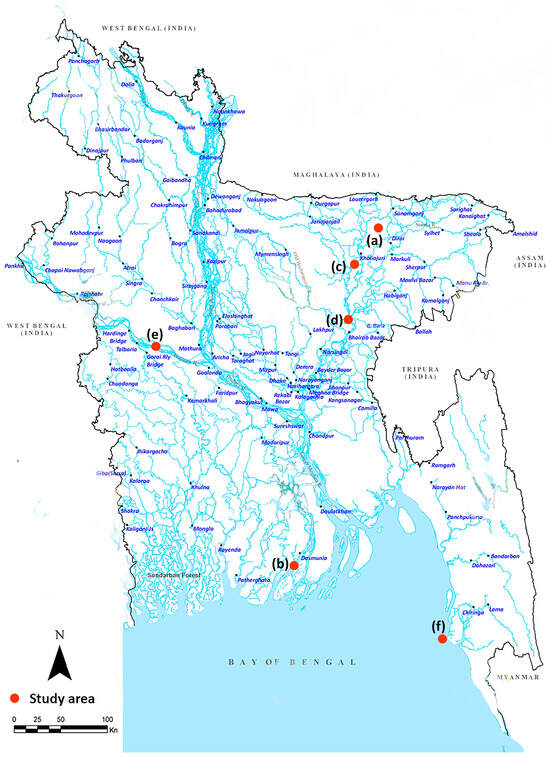
Figure 1
Open AccessArticle
The Importance and Scientific Value of Long Weather and Climate Records; Examples of Historical Marine Data Efforts across the Globe
by
Jürg Luterbacher, Rob Allan, Clive Wilkinson, Ed Hawkins, Praveen Teleti, Andrew Lorrey, Stefan Brönnimann, Peer Hechler, Kondylia Velikou and Elena Xoplaki
Climate 2024, 12(3), 39; https://doi.org/10.3390/cli12030039 - 07 Mar 2024
Abstract
The rescue, digitization, quality control, preservation, and utilization of long and high quality meteorological and climate records, particularly related to historical marine data, are crucial for advancing our understanding of the Earth’s climate system. In combination with land and air measurements, historical marine
[...] Read more.
The rescue, digitization, quality control, preservation, and utilization of long and high quality meteorological and climate records, particularly related to historical marine data, are crucial for advancing our understanding of the Earth’s climate system. In combination with land and air measurements, historical marine records serve as foundational pillars in linking present and past weather and climate information, offering essential insights into natural climate variability, extreme events in marine areas, baseline data for assessing current changes, and inputs for enhancing predictive climate models and reanalyses. This paper provides an overview of rescue activities covering marine weather data over the past centuries and presents and highlights several ongoing projects across the world and how the data are used in an integrative and international framework. Current and future continuous efforts in data rescue, digitization, quality control, and the development of temporally high-resolution meteorological and climatological observations from oceans, will greatly help to further complete our understanding and knowledge of the Earth’s climate system, including extremes, as well as improve the quality of reanalysis.
Full article
(This article belongs to the Special Issue The Importance of Long Climate Records)
►▼
Show Figures
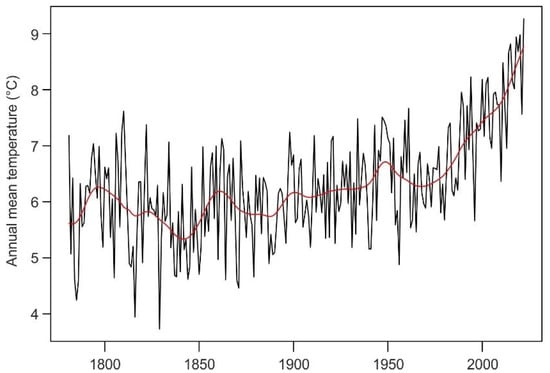
Figure 1
Open AccessArticle
Climate Change Paradox: The Least Responsible for It Encounters the Most of Its Implications
by
Hadi Allafta and Christian Opp
Climate 2024, 12(3), 38; https://doi.org/10.3390/cli12030038 - 06 Mar 2024
Abstract
►▼
Show Figures
Carbon dioxide (CO2) emissions are a major cause of climate change. However, CO2 emissions data for 178 countries from 1960 to 2018 revealed inequality in global CO2 emissions. For example, we found that 50% of the world’s population (ca.
[...] Read more.
Carbon dioxide (CO2) emissions are a major cause of climate change. However, CO2 emissions data for 178 countries from 1960 to 2018 revealed inequality in global CO2 emissions. For example, we found that 50% of the world’s population (ca. 3.75 billion people) was responsible for just 8.9% of the global cumulative carbon emissions. These people are concentrated in low- and middle-income countries. Conversely, 10% of the world’s population (ca. 757 million people), concentrated in high-income countries, were responsible for 46.8% of the global emissions. Furthermore, the literature review disclosed evolution of CO2 emission inequalities within countries. A significant (p < 0.001) negative (r2 = −0.52) correlation was detected between carbon emissions and climate change impacts on national incomes. Such correlation indicated that countries most likely to experience the greatest effects of climate change are also those who make the smallest contributions to its underlying causes. Similar disparities were observed within countries where low-income groups who make the smallest contributions to climate change are subjected to its worst implications. Evaluations of the data from the literature showed that migration could be the result of climate change, though such migration does not happen in isolation. In other words, this kind of migration is frequently linked to other issues such as the fragility and lack of adaptability of the communities. Furthermore, reviews showed that climate change catalyzes instability and conflict. On the other hand, conflict damages the environment and climate in multiple ways. Therefore, it is necessary to collaborate to resolve these two issues concurrently.
Full article

Figure 1
Open AccessArticle
Reducing Fossil Fuel Dependence and Exploring Just Energy Transition Pathways in Indonesia Using OSeMOSYS (Open-Source Energy Modelling System)
by
Laksmita Dwi Hersaputri, Rudolf Yeganyan, Carla Cannone, Fernando Plazas-Niño, Simone Osei-Owusu, Yiannis Kountouris and Mark Howells
Climate 2024, 12(3), 37; https://doi.org/10.3390/cli12030037 - 04 Mar 2024
Abstract
►▼
Show Figures
Indonesia’s commitment to the Paris Agreement and its Nationally Determined Contribution (NDC) is not adequately reflected in the significant CO2 emissions from fossil-fuel-intensive energy sectors, despite the enormous potential of renewable energy sources in the country. The ongoing coal regime has led
[...] Read more.
Indonesia’s commitment to the Paris Agreement and its Nationally Determined Contribution (NDC) is not adequately reflected in the significant CO2 emissions from fossil-fuel-intensive energy sectors, despite the enormous potential of renewable energy sources in the country. The ongoing coal regime has led to electricity oversupply and air pollution problems. Despite the huge challenges for Indonesia, a just energy transition away from fossil fuel is crucial. This study aims to explore the ideal energy mix and key emission reduction pathway in Indonesia in achieving a just energy transition using the least-cost optimisation energy modelling tool OSeMOSYS. Six scenarios are modelled over the period 2015–2050 including coal phase-out, NDC, the Just Energy Transition Partnership (JETP), and carbon tax implementation. The results highlight that solar power, geothermal power, and hydropower are the alternatives for coal decommissioning. Despite the large-scale investment in renewable energy under the NDC and JETP scenarios, emissions could be reduced by 55% and 52%, respectively, by 2050. Moreover, Indonesia’s current carbon tax rate will not lead to a significant emission reduction. Three recommended policies include (1) accelerating CFPP retirement; (2) imposing an aggressive carbon tax rate; (3) prioritising investment in solar technologies.
Full article
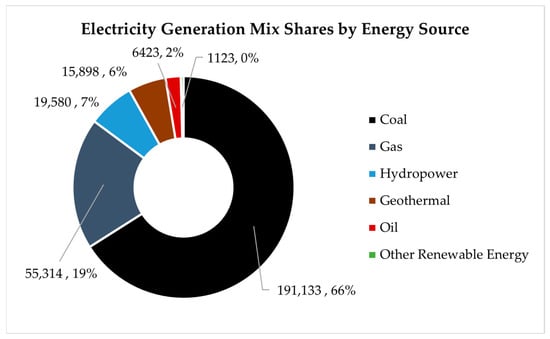
Figure 1

Journal Menu
► ▼ Journal Menu-
- Climate Home
- Aims & Scope
- Editorial Board
- Reviewer Board
- Topical Advisory Panel
- Instructions for Authors
- Special Issues
- Topics
- Sections & Collections
- Article Processing Charge
- Indexing & Archiving
- Editor’s Choice Articles
- Most Cited & Viewed
- Journal Statistics
- Journal History
- Journal Awards
- Society Collaborations
- Editorial Office
Journal Browser
► ▼ Journal BrowserHighly Accessed Articles
Latest Books
E-Mail Alert
News
Topics
Topic in
Atmosphere, Climate, Remote Sensing, Sensors, Water
Applications of Geodesy in Meteorological, Hydrological and Climatic Environments
Topic Editors: Peng Yuan, Vagner Ferreira, Balaji Devaraju, Liangke HuangDeadline: 31 May 2024
Topic in
Agronomy, Climate, Earth, Remote Sensing, Water
Advances in Crop Simulation Modelling
Topic Editors: Mavromatis Theodoros, Thomas Alexandridis, Vassilis AschonitisDeadline: 15 June 2024
Topic in
Hydrology, Water, Climate, Atmosphere, Agriculture, Geosciences
Advances in Hydro-Geological Research in Arid and Semi-Arid Areas
Topic Editors: Ahmed Elbeltagi, Quanhua Hou, Bin HeDeadline: 31 July 2024
Topic in
Atmosphere, Climate, Geosciences, Land, Remote Sensing, Minerals
Environmental Change, Geomorphological and Sedimentological Processes in Asian Hinterlands
Topic Editors: Jun Peng, Jingran Zhang, Yujie Guo, Guoqiang Li, Chongyi E, Xiangjun LiuDeadline: 31 August 2024

Conferences
Special Issues
Special Issue in
Climate
Modelling for the Influences of Climate and Landscape Processes on Hydrology
Guest Editors: Lidija Tadić, Enikő Anna Tamás, Melita MihaljevićDeadline: 30 April 2024
Special Issue in
Climate
Ecological Modeling for Adaptation to Climate Change
Guest Editor: Tongli WangDeadline: 25 May 2024
Special Issue in
Climate
Climate, Climate Change and the Arctic: Environment, Infrastructure, Health and Well-Being
Guest Editors: Elena Grigorieva, Sigríður KristjánsdóttirDeadline: 31 May 2024
Special Issue in
Climate
Forest Ecosystems under Climate Change
Guest Editor: Eldar KurbanovDeadline: 20 June 2024
Topical Collections
Topical Collection in
Climate
Adaptation and Mitigation Practices and Frameworks
Collection Editors: Chris Swanston, Leslie Brandt


